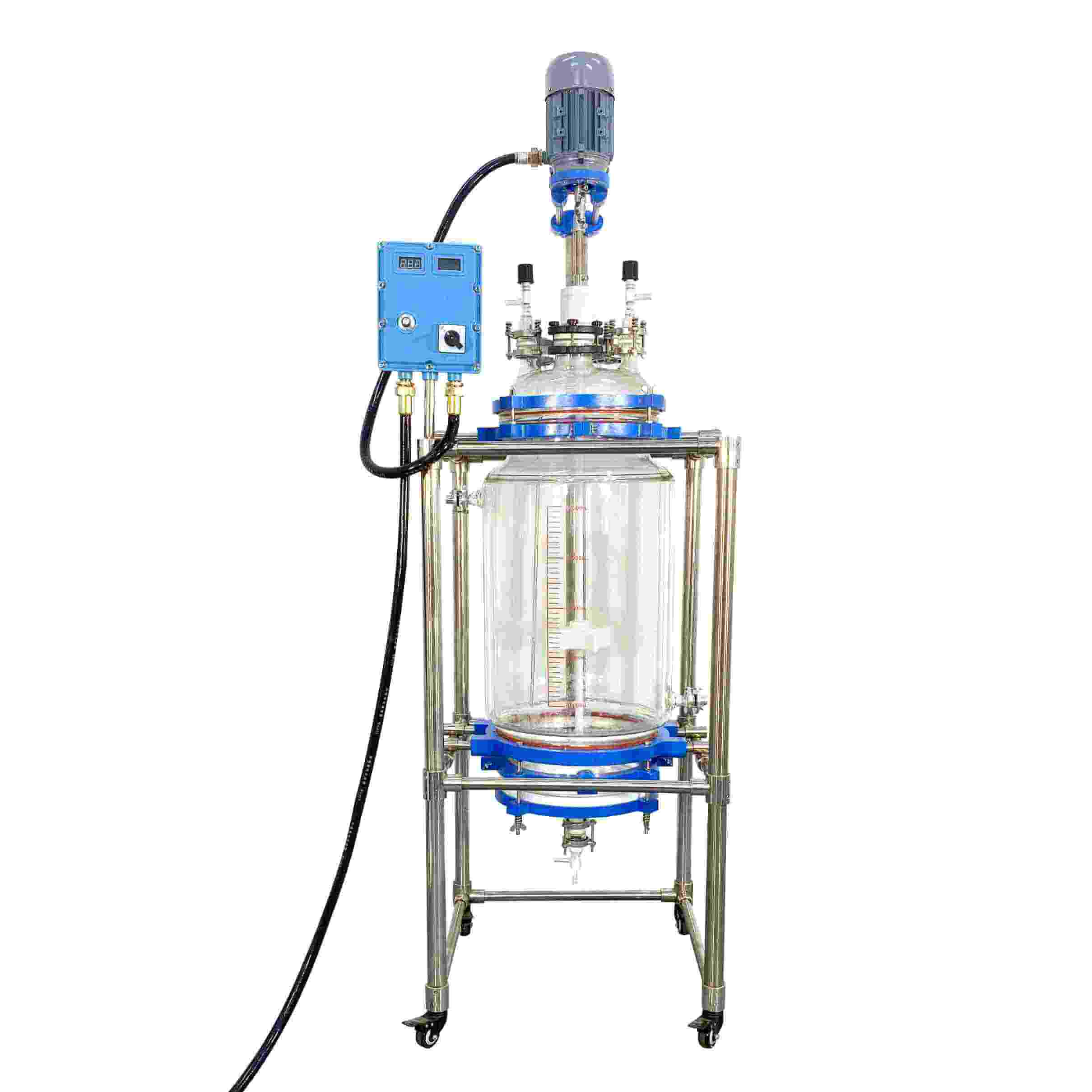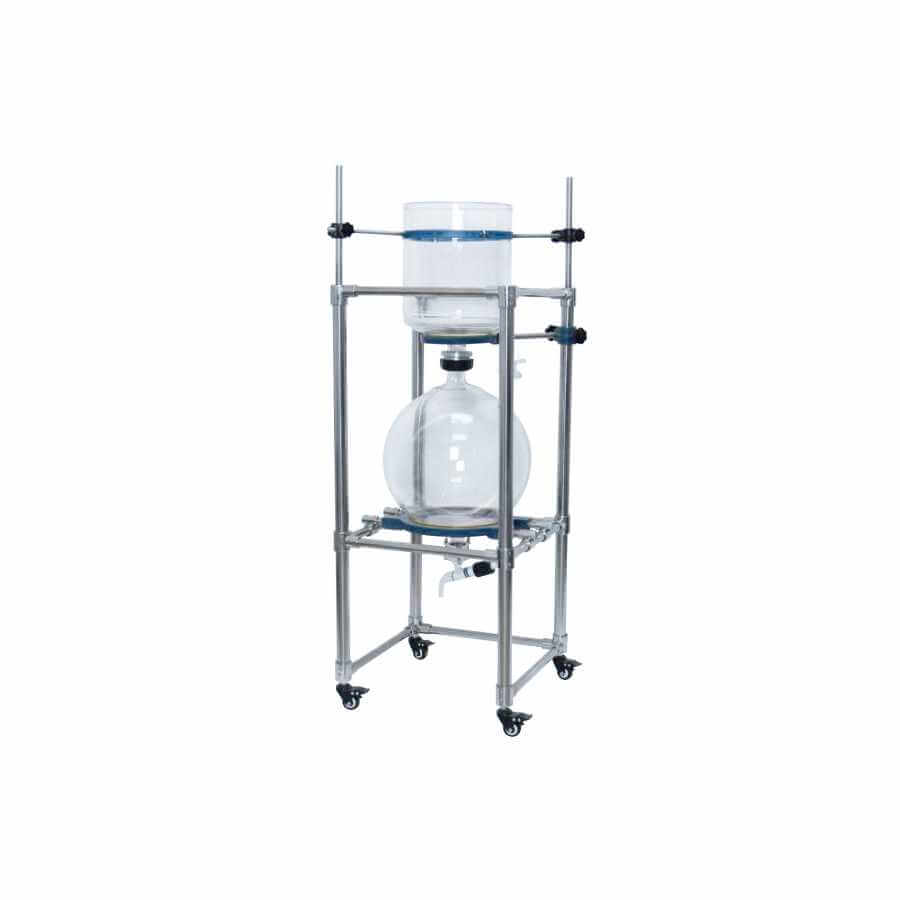

Glass Reactor
Glass reactors: used in chemical reactions, drug research and development, fine chemicals, food manufacturing, and other fields.
Material
glass
Capacity (L)
10-10000+
Mixing system
anchor, paddle, frame and others
Heating system
electric heating, oil heating and others
RUNGYU glass reactors are commonly used biochemical instruments and are widely used in modern fine chemicals, biopharmaceuticals, scientific research and experiments, and other industries. They can be used for concentration, distillation, reflux, separation, and purification reactions under the conditions of constant speed, constant force, and constant temperature. It is an ideal equipment for teaching, experiment, pilot test, and production.
Request a quoteThe interlayer of the double-layer glass reactor can be used for high-temperature reactions (the highertemperature can reach 200’C), and it can also be used for low-temperature reactions (the lowertemperature can reach -80’C); the double-layer glass reactor can be evacuated to do negative presurevacuum Distillation reaction, stiring reaction at room temperature, separation, and extraction, distilationefluxredction concentrotionreaction

Working principle of double-layer glass reactor
Constant temperature (high or low temperature) hot melt medium or cooling medium is injected through the interlayer of the double-layer glass reactor to heat or cool the materials in the double-layer glass reactor at a constant temperature and provide stirring. The materials react in the double-layer glass reactor, and the evaporation and reflux of the reaction liquid can be controlled. After the reaction is completed, the material can be discharged from the outlet at the bottom of the kettle, making the operation extremely convenient. It is an ideal equipment for chemical samples, sample experiments, biopharmaceuticals, and new material synthesis.
Main features of double-layer glass reactor
1.Frequency conversion speed regulation, AC induction motor. Constant speed, no brushes, no sparks, stable, and can work continuously.
2.The entire double-layer glass reactor is made of GG17 borosilicate glass, which has good chemical and physical properties.
3.The glass sandwich interface of the double-layer glass reactor is passed through and circulates hot oil, which can carry out heating reactions. Coolant can be used for low-temperature reactions.
4.It can react at room temperature and can quickly take away the reflected heat when exposed to tap water.
5.The lower discharge port of the double-layer glass reactor is equipped with a flange port and a PTFE valve. There are no dead corners in the container and it is removable to facilitate the discharge of solid materials.
6.The four-port double-layer glass reactor lid has an extra-large port design for easy cleaning. The standard port socket can optionally be equipped with reflux and distillation synthesis devices.
Glass reactors are generally divided into single-layer and double-layer, and the most widely used is the double-layer glass reactor. The double glass reaction kettle performs a stirring reaction in a closed container under set constant temperature conditions and normal pressure or negative pressure and can control the evaporation and reflux of the reaction solution.




